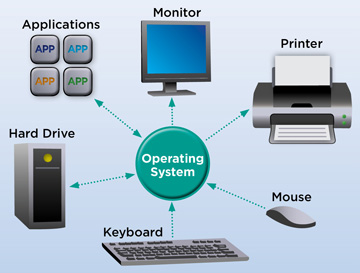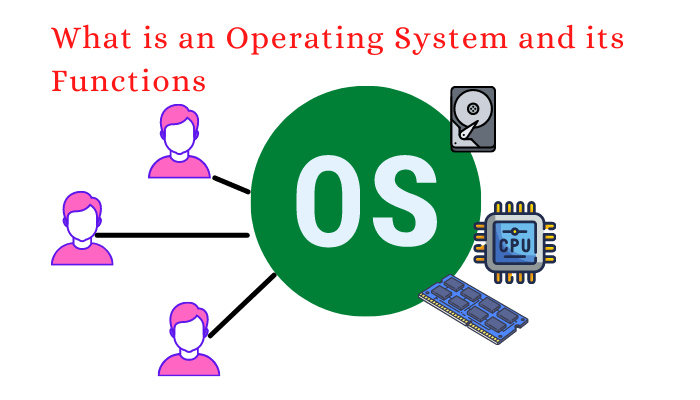Operating System: The Heart of Your Computer
Welcome to the first blog in our Operating System series, where we’ll explore the brain behind every computing device – from your laptop to your smartphone.
Whether you’re a student starting your computer science journey or a tech enthusiast trying to understand what really happens behind the scenes, this series is for you.
What is an Operating System?
An Operating System (OS) is like the control program for your computer. It’s the software that acts as a bridge between you (the user) and the computer’s physical parts (the hardware).
It manages all your hardware, runs your applications, and provides the foundation for other programs to work their magic. Think of it as the manager of your device – making sure everything runs smoothly, securely, and efficiently.
Why Do We Need an Operating System?
Imagine trying to talk to your computer directly in its native language of ones and zeros – impossible, right? That’s where the OS comes in.
Without an operating system:
- You couldn’t run any applications (like your browser, favorite games, or a document editor).
- Your keyboard, screen, and memory wouldn’t understand your commands.
- Your device would literally be just a fancy metal box with wires – totally useless!
In simple you can say that, the OS is what gives life and purpose to your hardware.
Key Functions of an Operating System
So, what exactly does this “manager” do all day? Let’s break down its main responsibilities:
| Function | Description |
|---|---|
| Process Management | Handles all the programs (or “processes”) running on your system, keeping them organized. |
| Memory Management | Smartly allocates and manages your computer’s RAM (Random Access Memory). |
| File System Management | Organizes and keeps track of all your files and folders so you can find them easily. |
| Device Management | Controls all your connected hardware, like printers, hard drives, and USB devices. |
| User Interface | Provides what you see and interact with – either a text-based CLI (Command Line Interface) or a visual GUI (Graphical User Interface). |
| Security & Access Control | Protects your precious data and makes sure only authorized users can access your device. |
Examples of Operating Systems
You probably interact with an OS every single day.
- Windows – The go-to for most PCs and a favorite for gaming.
- macOS – Apple’s sleek OS for all their Mac devices.
- Linux – An open-source powerhouse, often used for servers and by developers.
- Android – The OS that powers the vast majority of smartphones and tablets worldwide.
- iOS – Apple’s intuitive OS exclusively for iPhones and iPads.
Real-World Analogy
Let’s use a simple example: Imagine a company where employees (your applications) are busy working using various machines (your hardware).
The Operating System is just like the company manager – assigning tasks, monitoring how everyone’s working, resolving any conflicts, and ensuring the whole operation runs smoothly and efficiently. Without a good manager, things would quickly fall into chaos.
What’s Coming Next?
In this exciting series, we’re going to dive even deeper into OS concepts. We’ll simplify topics like:
- Different Types of Operating Systems
- How Processes & Threads work
- Advanced Memory Management techniques
- Understanding Scheduling Algorithms
- Solving tricky Deadlocks
- The magic of Virtual Memory
- Exploring various File Systems
- …and much more!
Each post will break down technical terms into simple, easy-to-understand language, complete with real-world examples and diagrams to help you grasp everything.
Final Thoughts
Understanding the operating system isn’t just for computer science gurus; it’s essential for anyone curious about how our digital world works. It’s the bedrock upon which all applications and systems are built.
So, buckle up – we’re about to go deep into the fascinating world of OS with clarity, curiosity, and confidence. Get ready to truly understand the heart of your computer.




